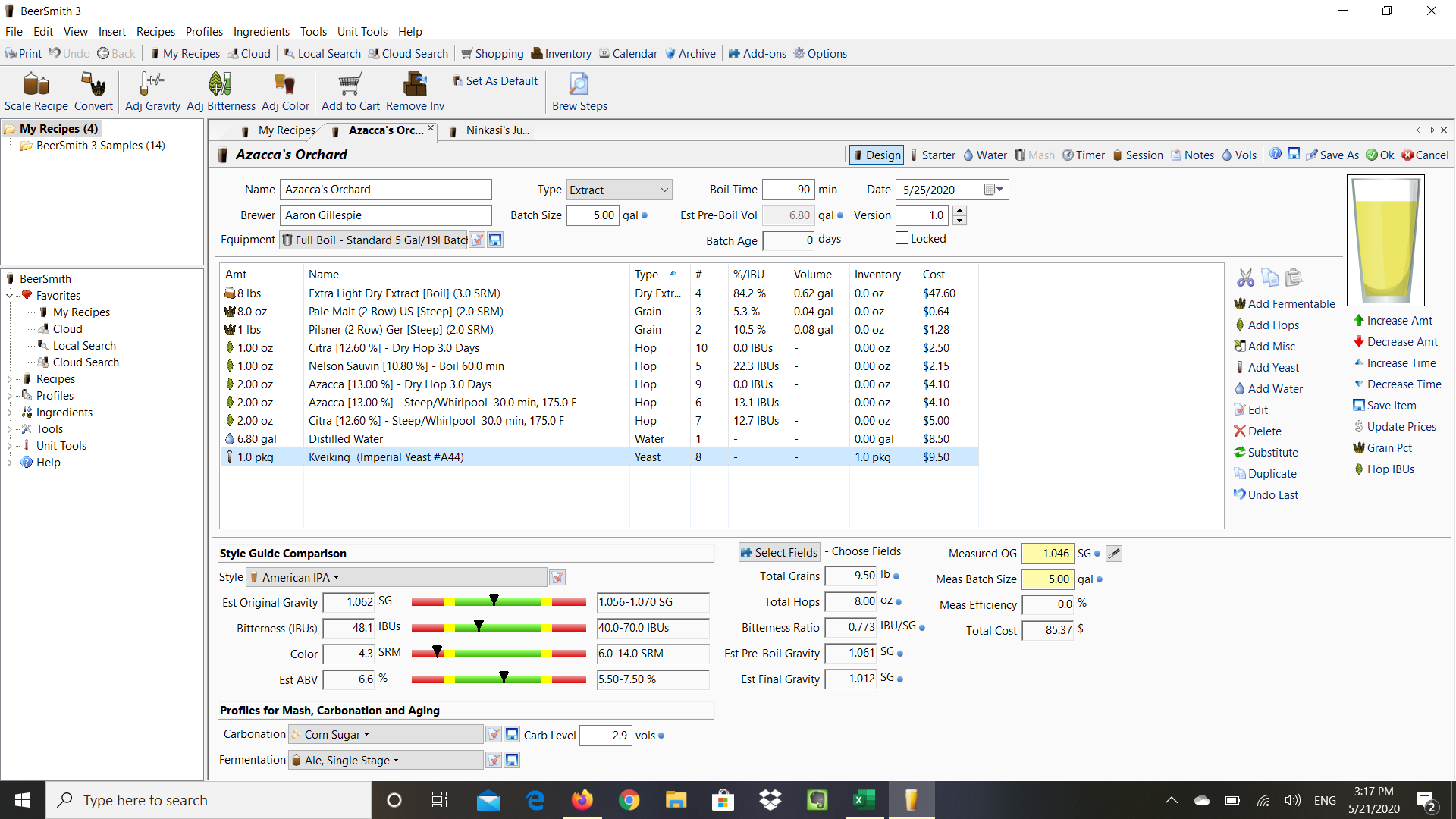Ok....
So, this is the second beer I’ve brewed on my own (extract - 5 gal partial boil using distilled H20) & I keep overshooting the OG by 0.012/0.013 pts. I took to using the brewsmith 3 pgrm to help with calculations while I become more familiar with them & despite adjusting for virtually every variable I can think of, I’ve consistently, and substantially, overshot estimated OG’s (used the app for a group brew & the same thing happened). Arguably, this is the best problem to have but now I feel I’m in over my head & experience level. I’d also like to know how this keep happening...
On Sunday, I brewed a beer that was estimated to be 1.070 OG (a hoppier mod of my original beer which came in at 1.060 [a beer that was originally estimated to come in at 1.047]). Instead, it came in at 1.082. I was expecting to ferment for 5 days, throw in an ounce of dry hops and let it condition for 10 more before bottling & letting em condition for two weeks at 72F before chilling. First round turned out great. That being said, I’m not at all sure how to modify the time tables here for what has turned into a double ipa for all intents and purposes. And most ppl don’t seem to agree...well, anywhere.
After doing some initial research, recon & heavy consulting of Palmer’s How to Brew, I figured I’d practice flexibility by just extending those time tables. I also figured I’d adapt the recipe by double dry hopping since I’ve got 2 oz of Citra & Galaxy hops left over. Does anyone have experience brewing & bottle conditioning IIPA’s without all the fancy gadgets? If so, how does this time table sound?
Fermentation began btwn 14-18 hours using US-05. (Pitched a tad low at 66F). Side note: after much reading and consulting, I plan to keep this in the primary sitting on yeast until bottling. Just sounds more romantic & more importantly, efficient.
- 16 days in primary @ 64-68F, take gravity reading, add first addition dry hops (1 oz)
- 18 days in primary, add second addition dry hops (1 oz)
- @ 21 days, add priming sugar, bottle & let condition at 70-72F for two weeks before chilling at 43F for one week minimum. Then, UNBOTTLING DAY!
Am I on the right track here, or have I overshot/undershot the ideal? Any thoughts or suggestions about this timeline from experience (direct or indirect) would be greatly appreciated? Thanks y’all.
So, this is the second beer I’ve brewed on my own (extract - 5 gal partial boil using distilled H20) & I keep overshooting the OG by 0.012/0.013 pts. I took to using the brewsmith 3 pgrm to help with calculations while I become more familiar with them & despite adjusting for virtually every variable I can think of, I’ve consistently, and substantially, overshot estimated OG’s (used the app for a group brew & the same thing happened). Arguably, this is the best problem to have but now I feel I’m in over my head & experience level. I’d also like to know how this keep happening...
On Sunday, I brewed a beer that was estimated to be 1.070 OG (a hoppier mod of my original beer which came in at 1.060 [a beer that was originally estimated to come in at 1.047]). Instead, it came in at 1.082. I was expecting to ferment for 5 days, throw in an ounce of dry hops and let it condition for 10 more before bottling & letting em condition for two weeks at 72F before chilling. First round turned out great. That being said, I’m not at all sure how to modify the time tables here for what has turned into a double ipa for all intents and purposes. And most ppl don’t seem to agree...well, anywhere.
After doing some initial research, recon & heavy consulting of Palmer’s How to Brew, I figured I’d practice flexibility by just extending those time tables. I also figured I’d adapt the recipe by double dry hopping since I’ve got 2 oz of Citra & Galaxy hops left over. Does anyone have experience brewing & bottle conditioning IIPA’s without all the fancy gadgets? If so, how does this time table sound?
Fermentation began btwn 14-18 hours using US-05. (Pitched a tad low at 66F). Side note: after much reading and consulting, I plan to keep this in the primary sitting on yeast until bottling. Just sounds more romantic & more importantly, efficient.
- 16 days in primary @ 64-68F, take gravity reading, add first addition dry hops (1 oz)
- 18 days in primary, add second addition dry hops (1 oz)
- @ 21 days, add priming sugar, bottle & let condition at 70-72F for two weeks before chilling at 43F for one week minimum. Then, UNBOTTLING DAY!
Am I on the right track here, or have I overshot/undershot the ideal? Any thoughts or suggestions about this timeline from experience (direct or indirect) would be greatly appreciated? Thanks y’all.




